 History
History  History
History  Animals
Animals Ten Times It Rained Animals (Yes, Animals)
 Mysteries
Mysteries 10 Devastating Missing Child Cases That Remain Unsolved
 Creepy
Creepy 10 Scary Tales from the Middle Ages That’ll Keep You up at Night
 Humans
Humans 10 One-of-a-kind People the World Said Goodbye to in July 2024
 Movies and TV
Movies and TV 10 Holiday Movies Released at Odd Times of the Year
 Politics
Politics 10 Countries Where Religion and Politics Are Inseparable
 Weird Stuff
Weird Stuff 10 Freaky Times When Famous Body Parts Were Stolen
 Miscellaneous
Miscellaneous 10 Interesting Things Manufacturers Stopped Making and Why
 Gaming
Gaming 10 Funny Tutorials in Games
 History
History 10 Desperate Last Stands That Ended in Victory
 Animals
Animals Ten Times It Rained Animals (Yes, Animals)
 Mysteries
Mysteries 10 Devastating Missing Child Cases That Remain Unsolved
Who's Behind Listverse?

Jamie Frater
Head Editor
Jamie founded Listverse due to an insatiable desire to share fascinating, obscure, and bizarre facts. He has been a guest speaker on numerous national radio and television stations and is a five time published author.
More About Us Creepy
Creepy 10 Scary Tales from the Middle Ages That’ll Keep You up at Night
 Humans
Humans 10 One-of-a-kind People the World Said Goodbye to in July 2024
 Movies and TV
Movies and TV 10 Holiday Movies Released at Odd Times of the Year
 Politics
Politics 10 Countries Where Religion and Politics Are Inseparable
 Weird Stuff
Weird Stuff 10 Freaky Times When Famous Body Parts Were Stolen
 Miscellaneous
Miscellaneous 10 Interesting Things Manufacturers Stopped Making and Why
 Gaming
Gaming 10 Funny Tutorials in Games
10 Bizarre Riots Caused By Food
Abraham Maslow created a psychological theory of human motivation called the hierarchy of needs, in which the various reasons humans do things are listed in order of importance. It states that each need in the level below needs to be filled before those in the next level up can be filled. For example, morality is at the top and food is at the bottom—which would help explain why people will riot when food is involved.
10 The Novocherkassk Massacre

On June 1st, 1962, the Soviet government unveiled an alleged temporary increase in the price of basic foodstuffs. The management of the Novocherkassk train factory also decided to halve the wages of its workers. As a result, the workers went on strike to protest the new rules, going so far as to stop a train on the tracks. Local authorities ended up firing into the mob, leaving 24 dead and 69 wounded. Officials buried the fallen in unmarked graves during the night.
Eventually, the KGB was brought in disguised as fellow protesters to take pictures of those involved, ensuring that they would be arrested after the riot was over. When the dust settled, over 100 people were arrested. Seven people identified as ringleaders were executed and most others sentenced to 10–15 years of hard labor. The riot was largely unsuccessful, having been largely covered up by the Soviet government.
9 The Boston Bread Riot
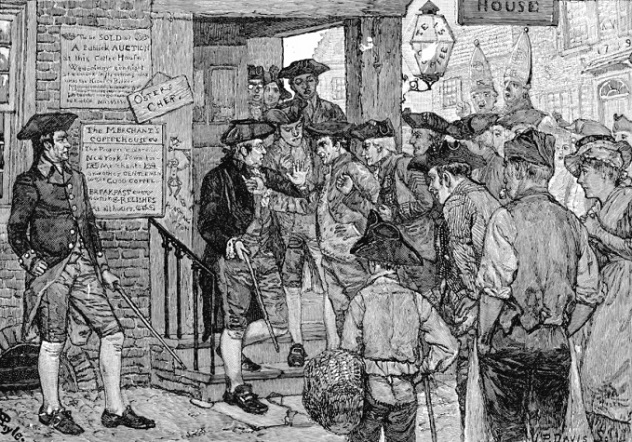
The Boston Bread Riot took place in the first half of 1713, the third in a series of three different riots spread out over a number of years. It was spurred by a massive food shortage as well as the extravagant price of various fundamental items, such as bread. The poor people of Boston were angry that some of the larger merchants were exporting food when they were starving, so they took to the streets. Two hundred men broke into a local warehouse looking for corn, then shot and injured the lieutenant governor.
The rioting proved successful, as the government of the city proclaimed that exporting food during famine-like conditions was illegal. They also temporarily fixed grain and bread prices, even going so far as to seize a large amount of wheat from a ship that came in later that year. It was given to the local bakers, who were instructed to bake bread as quickly as possible and distribute it to the needy of the city. Even with these new laws, food-related rioting continued throughout the 18th century.
8 Huelga de la Carne
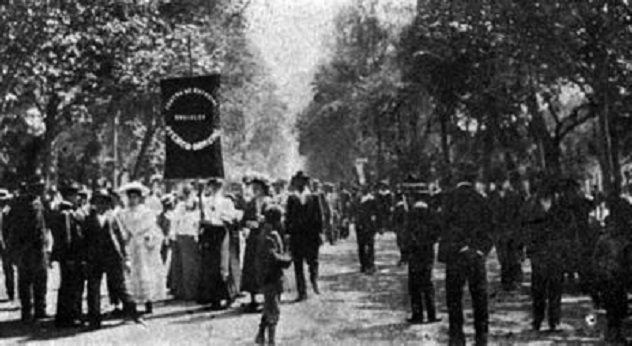
La Huelga de la Carne, or “The Meat Riots,” was a massive demonstration which took place in Chile in October of 1905. New duties had recently been placed on the import of Argentinean cattle, driving up the price of beef tremendously. This riot is unique in that it took place years after the initial price increase and they revolved around a “luxury” foodstuff, rather than a more “basic” one. The people of Chile hadn’t even had to eliminate beef from their diets—they needed only to cut back a little.
Nevertheless, what started out as a non-violent protest in the city of Santiago quickly evolved into a full-blown riot after President Germán Riesco was nowhere to be found and confusion arose among the protestors as to whether or not he had refused a meeting with them. Soon afterwards, the events known as “Red Week” took place. A number of buildings were destroyed and police began to attack the rioters. When 1,500 army troops arrived the next week, order was quickly restored—unfortunately, it wasn’t before nearly 200 people lost their lives in the chaos.
7 The Southern Bread Riots
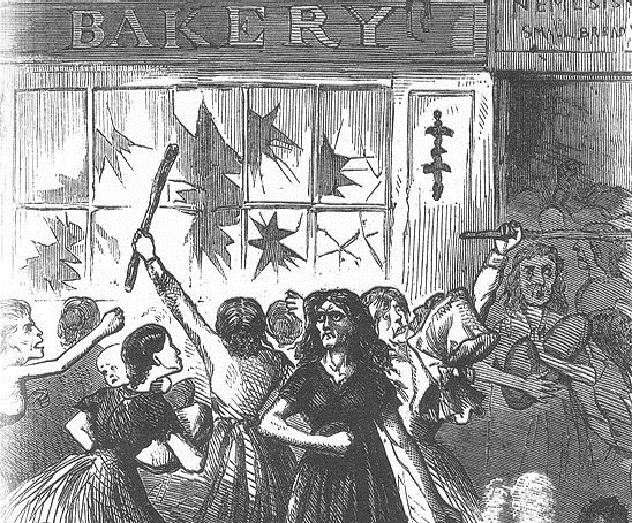
The Southern Bread Riots were a number of different incidents which took place in the Confederate States of America during the American Civil War. Surprisingly, these demonstrations were largely perpetrated by women. There were a number of factors which contributed to the shortage of food, most notably the enormous inflation caused by the Confederate government and the conscription of many of the older farmers of the area. The most famous of the riots was the one which took place in Richmond, Virginia on April 2, 1863.
After being denied a meeting with the governor, a large portion of the women of Richmond began tearing through the city, looting whatever they could get their hands on. The local government tried to get them to disperse, only succeeding when they threatened to shoot anyone who didn’t leave. More than sixty people were charged as a result of the riots. While the richer participants faced less severe punishments, the city did move to assist the poor. It set up special markets for those who were desperately needy, allowing them to pay much less for their food.
6 The Flour Riot
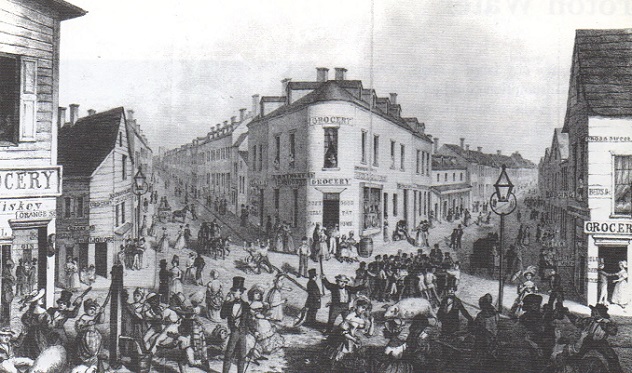
The Great Fire of New York devastated the city in 1835, destroying almost 700 buildings and causing a city-wide depression to take place. After the price of flour almost tripled, up from $7 a barrel to $20, a mass protest was held in February of 1837. The gathering quickly turned into a mob, as rumors of flour-hoarding at two separate warehouses spread throughout the crowd. They marched on Eli Hart & Co., offering to give them $8 per barrel for the more than 53,000 barrels they allegedly held.
When they arrived, however, they immediately began destroying the flour. They managed to empty at least 30 barrels before the police, then the mayor, arrived. The mayor was met with a barrage of hurled objects and the riot flared up, as people broke through the police blockade and destroyed more and more barrels of flour. Another target of the mob’s destruction, Meech & Co., suffered hundreds of destroyed barrels at their warehouse. The mob was finally broken up by an army of police and citizen volunteers, but only about 40 people were arrested. The ringleaders all escaped justice.
5 The Women’s March On Versailles
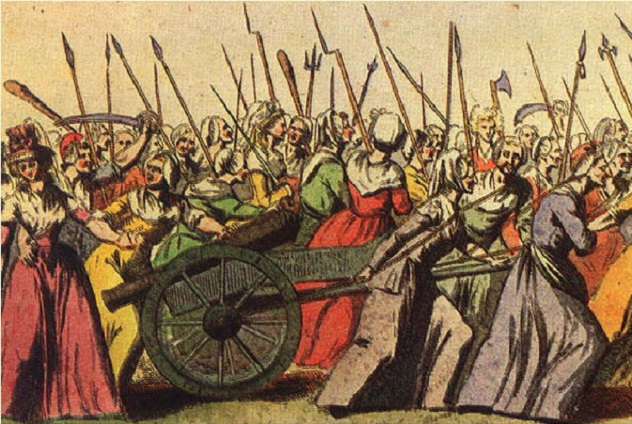
On October 5th, 1789, a large group of Parisian women met in the central marketplace of Paris to discuss the price increase of bread, the staple of their diet. The mob of nearly 10,000 women that had formed began storming through the city determined to secure a supply of bread. After a series of royal feasts, in which the noblemen stomped on a national icon in jest, the rioters decided to march on Versailles.
The march turned out to be a watershed moment in the French Revolution, as the poor of France had shown themselves to have more power than was previously thought. Upon seeing a massive crowd of armed civilians, King Louis XVI ceded to the rioters demands, shipping all of the bread in Versailles to Paris and agreeing to move his royal court to Paris—a decision that contributed significantly to his eventual demise.
4 The Egyptian Bread Riots

Foreshadowing the riots which took place in Egypt in recent years, most of the major cities of Egypt experienced rioting from January 18–19 in 1977. President Anwar Sadat, wishing to move closer diplomatically to the West, had recently begun instituting more of a free market economy in the country. In late 1976, Egypt took out a number of loans from the IMF, with the condition that they remove any subsidies on foodstuffs such as bread and oil.
Dramatic price increases followed the very next day, resulting in tens of thousands of citizens taking to the streets in protest. Violence between the protestors and the police erupted and cases of sabotage, such as railway destruction, began taking place throughout the country. Less than 48 hours after the start of the riots, the government announced the repeal of the subsidies removal and sent in the army to enforce a brutal crackdown. Order was restored the next day, but not until nearly 800 people lost their lives, with hundreds more injured.
3 The Salt Riot
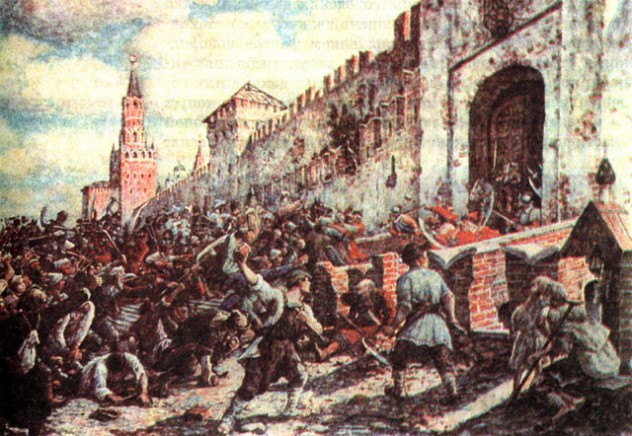
In the years following the Time of Troubles—an era in Russian history in which nearly a third of the population died from a famine—the treasury of the country had been slowly depleted. In order to raise money, the government abolished a number of taxes in favor of a flat tax on salt, which was set so high many of the poor couldn’t afford it. When petitions were brought to the young tsar, he refused to listen, angering the already downtrodden populace.
A large-scale riot erupted in Moscow, with nearly 2,000 people perishing in the chaos. Similar riots began to break out in other cities in the country, targeting the high-ranking officials who were long thought to be corrupt. A number of small concessions were granted, enabling the government to gain the upper hand on the rioters, resulting in a flurry of arrests and execution. In the end, many of the concessions were slowly reversed, and their repeal passed largely violence-free.
2 The Flour War
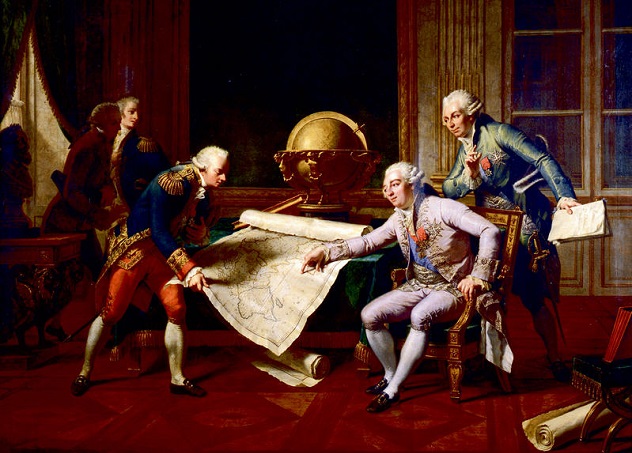
Shortly after Louis XVI was crowned in 1774, his government instituted a series of deregulations aimed at creating a free market for grain. During the spring, when flour is scarcer, prices rose so high that the working class was unable to buy bread, which accounted for nearly three-quarters of their diet. On April 27th, rioting broke out in a small town north of Paris, eventually spreading to dozens of cities in the northern half of the country.
Fearing that the local authorities would be too sympathetic, Louis XVI sent the army in to deal with the rioting populace, deploying nearly 25,000 troops. After two weeks of rioting and hundreds of arrests—as well as two very public executions—the people’s anger died down and order was restored. To placate the rioters, the government maintained a tight grip on flour prices until a surplus occurred in 1787, the same year as the start of the French Revolution.
1 The Rice Riots
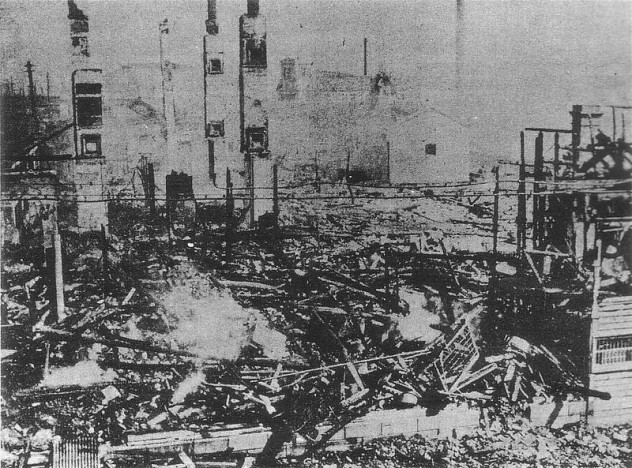
For three months in the middle of 1918, Japan was beset by a series of riots precipitated by a sudden increase in the price of rice, which had doubled in a relatively short amount of time. The demonstrations lasted 62 days and as many as 10 million people are said to have been involved, making it the largest of its kind in Japan’s history.
Unlike other food riots, these participants were mostly middle-class and their rioting consisted of imposed price decreases rather than widespread looting. Their demands were relatively minor, chiefly the immediate possession of rice. Due to a lack of centralization, the rioting never gathered much steam and most of them died out by September. Severe retribution, ranging from arrests to summary executions by troops stationed near the riots, prevented any individual demonstration from lasting much longer than a week. Even so, the consequences were enormous—over 25,000 were arrested and the prime minister and his cabinet resigned later that year as a result of the riots.








